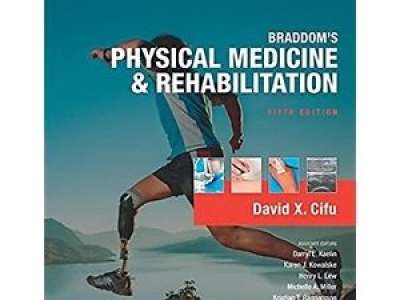
Braddom's Physical Medicine and Rehabilitation, 5th Edition by David X. Cifu MD
Pages (excluding the index): 1161; RRP: £202.64
The "medicine" aspect of physical medicine and rehabilitation is strongly emphasised in this text book; almost all of the 150 contributors across the 50 chapters are MDs, and most of these are from the United States. Although medics play a key role in many of the UK’s rehabilitation and physical medicine institutions, it appears that the US has a much stronger medical lean to the application of physical medicine and rehabilitation than perhaps we have in the UK.
The book is broken down into four sections: (1) Evaluation, (2) Treatment Techniques and Special Equipment, (3) Common Clinical Problems, and (4) Issues in Specific Diagnoses.
Of particular interest to the PMG reader will be the chapter on wheelchairs and seating systems in section 2. Unlike the majority of chapters, this one has been compiled by a mix of engineers and therapists who have managed to put together a succinct and detailed overview of the field. Unfortunately, it is missing a cutting edge feel, and already some of the illustrations look somewhat dated. Additionally, as it is only an overview, it is never going to compete with the in-depth wheelchair and seating texts that are available.
I found each chapter to be exactly that - a clear, concise overview. The chapter on spinal orthoses gives an excellent recap on the theory behind their use that has been previously studied, revised, and long since forgotten.
The chapters in section 4, “Issues in Specific Diagnoses”, follow a clear pattern. For example, the chapter on osteoporosis starts by discussing the anatomy and physiology of bone, before delving into the conditions of bone loss. The results of the condition, such as fractures, are detailed, and then treatments and management strategies, such as exercise regimes, are offered. Eighteen other diagnoses are handled in a similarly logical fashion, apart from the stroke section, which appears to be missing the “treatment and management” part; this had not gone unnoticed by a brace of reviewers on Amazon.com. It could be that the editors thought the treatment and management of stroke to be so broad that the techniques have already been adequately dealt with in previous parts of the book, such as “manipulation, traction and massage” in Section 2, but it does feel like a slightly disjointed omission.
Overall, as a comprehensive overview of physical medicine and rehabilitation, this book would make an excellent addition to any departmental library. It would be of equal benefit to early career clinicians, as well as to those needing a recap.






.jpg)



Excellent review, was quite tempted, until I noticed the price.
If anyone is interested it's available on Amazon for about £158
by Martin Seabrook on 14th October 2016 | 17:14pm